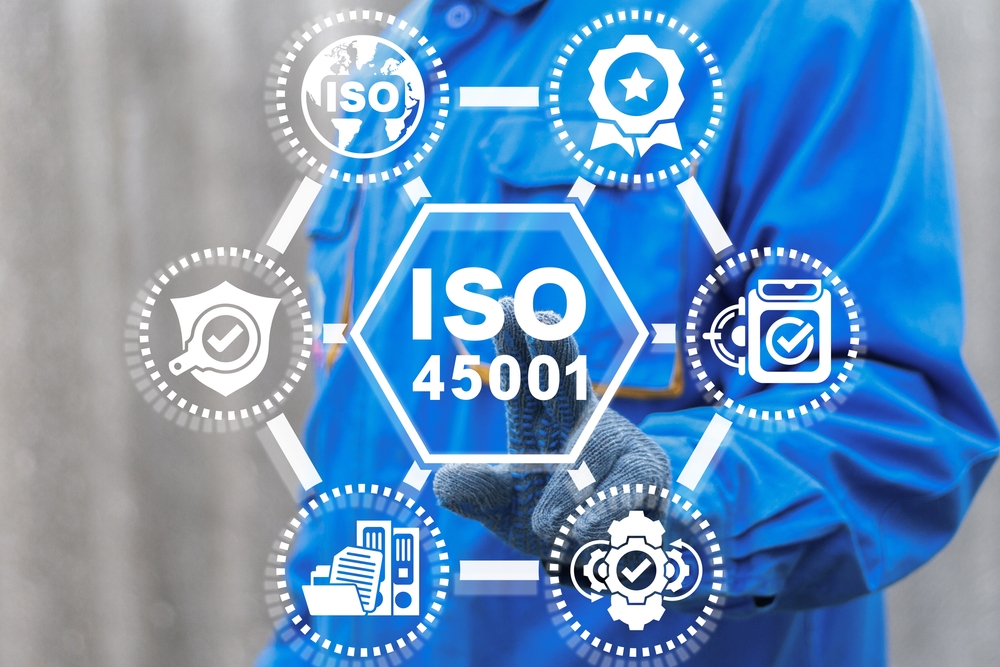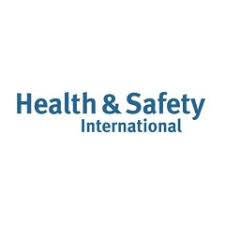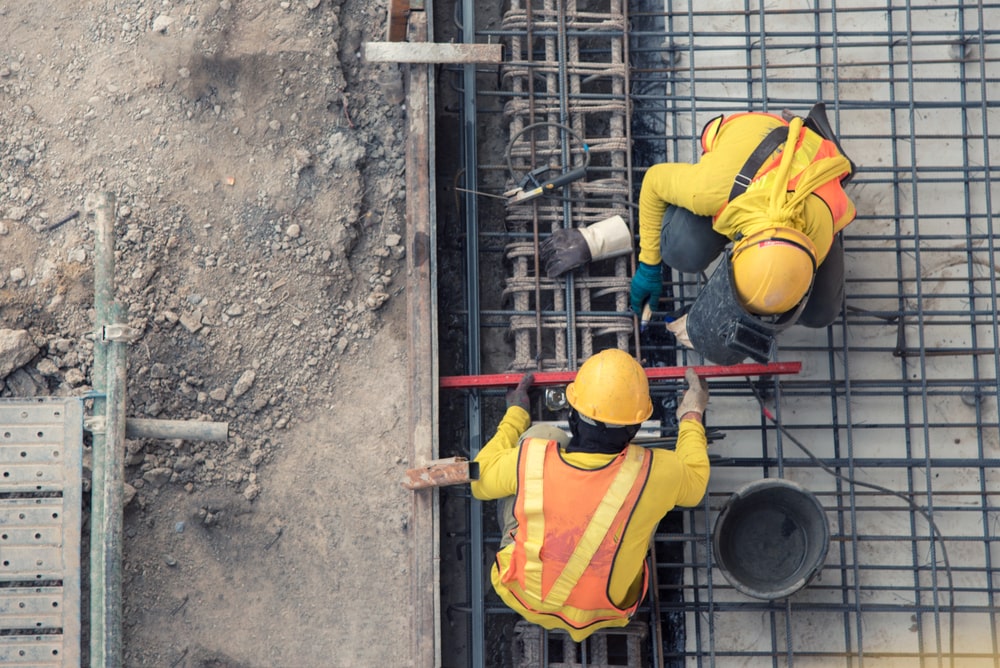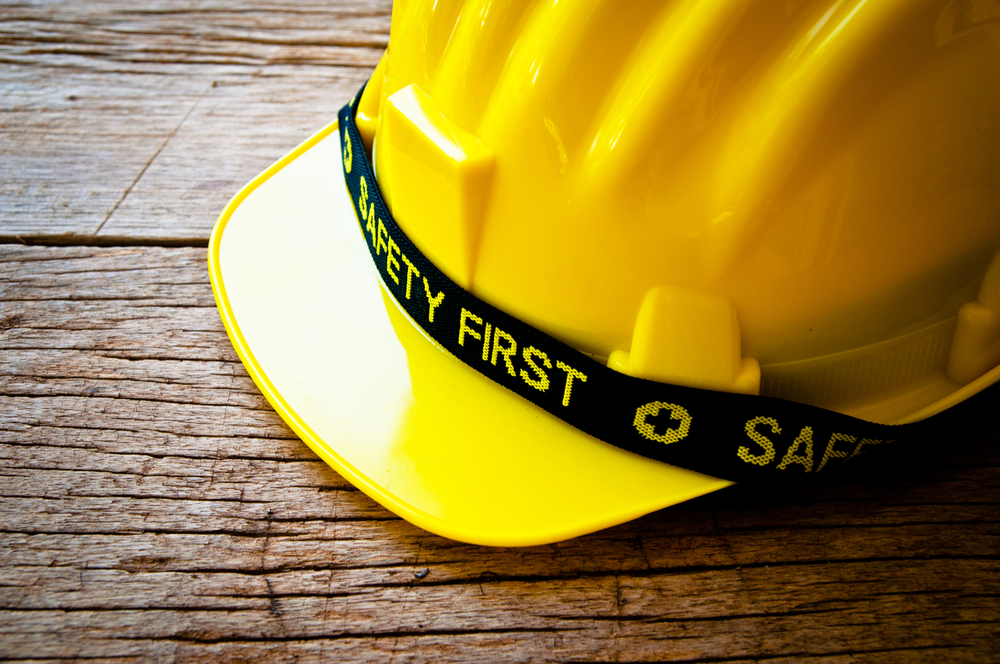News Post
Examples of Health and Safety Training Required in the Workplace
Health and safety training is a requirement in the workplace, no matter which sector you work in. Our experts at SMS Europe have been providing an extensive range of specialist health and safety services for almost 20 years. To help make work environments a safer place, which is at the heart of what we do, we’ve put together this handy guide to assist companies and employees in implementing proper health and safety training in their businesses.
Why Is Health and Safety in the Workplace So Important?
Health and safety protocols help organisations to manage and reduce risks in the workplace, protecting employees, customers, and the business alike. But what makes these protocols so important? Let’s take a look.
It’s the Right Thing To Do
It is every business's responsibility to ensure that all employees are safe and healthy at the end of every working day. Not only does this help the working day to be an enjoyable experience, but it is the morally right thing to do.
Financially Savvy
From a financial perspective, protecting employees can result in lower business costs, cheaper insurance premiums, and less potentially costly lawsuits or fines.
Reduces Employee Absence
Health and safety protocols protect the working environment from harm, and first aid training can give employees the skills, awareness, and knowledge to deal with minor injuries immediately. This will reduce employee absence due to sickness and injury, improving the efficiency and productivity of the workforce.
Less Business Downtime
Sickness and injury can also cause businesses to have to close until they have dealt with the issue at hand. Thus, decent health and safety protocols reduce business downtime, which can save companies from losing money.
Strong Corporate Social Responsibility (CSR)
Now, more than ever before, it is essential for businesses to have a strong CSR strategy, which shows, amongst other things, how they protect their employees, the local community, and wider society. This will prove to the outside world that the company is committed to protecting the environment and those that live within it, strengthening the ethics of the brand.
Ethical Practices Attract Customers, Employees, and Investors
Proving that a business operates ethically is a surefire way to attract customers, employees, and investors. Many customers, especially Millennials and Gen Z, prefer to do business with a company that shares the same morals and values - and they will be more likely to be loyal to the brand, too.
Similarly, more and more job seekers, like young graduates, are attracted to companies that have strong CSR practices. Attracting more loyal customers, and the best talent will automatically make a business more attractive to investors and potential partners, thus boosting potential funding streams.
It Is a Legal Obligation
In the UK, it is a legal requirement for businesses to conduct adequate risk assessments to identify safety risks, implementing adequate health and safety policies to reduce these risks. You might also be required to undertake safety courses and provide a certificate that shows you have completed the necessary health and safety requirements when prompted. And this brings us to our next point…
Which Guidelines Will Your Business Need to Follow?
Depending on the industry that your business operates in, there will be a specific range of health and safety guidelines that need to be adhered to. These guidelines clearly state the business’ roles and responsibilities in keeping their workplace and employees safe. The main examples of safety management regulations, requirements, practices, and procedures are as follows.
The Management of Health and Safety at Work Regulations 1999
This is the main health and safety legislation that all businesses will have to follow, and so should be familiar with. This legislation requires employers to make a suitable risk assessment, act upon the risks that they identify, and write up the necessary health and safety policy accordingly. This includes things such as efficient emergency procedures, an accident reporting procedure, evacuation procedures, and so on.
It also requires employers to appoint someone to oversee health and safety in the workplace and provide other employees with information and safety training to keep them safe at work.
Workplace (Health, Safety and Welfare) Regulations 1992
These regulations require employers to ensure that all workplaces have adequate facilities and safe passageways, in addition to the necessary lighting, heating, and ventilation to keep workers safe. These amenities should also be kept clean, clear, and in good working order to protect the environment from harm. Emergency procedures should be clearly signposted at all times, and safety procedures should be made known to all employees.
Health and Safety (Display Screen Equipment) Regulations 1992
This legislation supports workers who frequently use or rely on a computer as part of their daily tasks. Those who use computers must take adequate breaks, be provided regular eye tests, be able to access health and safety information, and be given an accessible range of adjustable furniture. Employers must conduct risk assessments of employee workstations and make the appropriate adjustments to reduce risk and injury, such as repetitive strain injury (RSI).
Personal Protective Equipment at Work Regulations 1992
As you can imagine, this legislation requires employers to provide personal protective equipment (PPE), free of charge, to all employees that might require it. The PPE that employers provide depends on the risk at hand. For example, construction workers should be provided with hardhats, clinical environments require masks, those with small explosion risks might need safety goggles, and so on. Employees must also be trained to properly use this PPE through regular safety training courses.
Manual Handling Operations Regulations 1992
In order to provide a safe working environment, employers must reduce the need for employees to undertake manual handling tasks wherever possible. This is to reduce the risk of hazards and injury. Workplace risks should be carefully assessed and might be subject to the personal qualities and attributes of the employee carrying out the task at hand. Employees must also be provided with the accurate weight of each item requiring handling.
Provision and Use of Work Equipment Regulations 1998
These regulations outline that all work equipment must be suitable for the purpose and properly maintained. Employees must also be properly trained in using the equipment, whether that is through courses in classroom environments or an online course environment. This is to protect employees from certain safety risks, such as through electrical risk assessments, and to prevent misuse of dangerous machinery.
Reporting of Injuries, Diseases and Dangerous Occurrences Regulations 1995
It is a legal requirement as part of your safety responsibilities to report the following to the Health and Safety Executive (HSE) or your local environmental health authority:
- Death
- Injuries requiring immediate medical attention
- Injuries involving more than seven days off work
- Occupational diseases like RSI, carpal tunnel syndrome, and so on
- Any ‘dangerous occurrences’, or ‘near misses’.
Working Time Regulations 1998
As the title suggests, this legislation lays out the maximum working hours per week, plus daily rest periods, annual holiday entitlement, and breaks employers must provide. It also stipulates additional adjustments for those identified by risk profiling, as well as young workers under 18 years of age. Though it might not be traditionally considered part of health and safety in the workplace, these are still effective procedures that contribute to a safe workplace environment, as it ensures all employees stay well rested and healthy.
Online Safety
Though not necessarily covered by legislation, employers should still follow guidance to ensure online health and safety. In the digital age, this includes an extensive range of topics such as password protection, identifying online risks, data protection, and making sure anti-virus software is up to date. Employers might use examples and experience from incidents as a learning experience, enrol employees in online safety training courses, and implement the correct procedures for online health and safety.
The Most Important Types of Health and Safety Training in the Workplace
Health and safety training is an essential part of any organisation. It is the responsibility of the business to ensure that all employees are well equipped to deal with any emergency and have access to the necessary information regarding all procedures.
This goes for all kinds of jobs - whether the employee has a desk job or one of the riskiest jobs in the business, such as construction! Properly training employees will reduce the number of incidents on the premises, reduce risk, and help to establish a healthy, happy, and safe workplace culture.
There are three main types of health and safety training that all employees should undertake, regardless of the industry they work in. Of course, for some sectors, more specialised training might also be required on top of this.
Induction Training
Induction training should be provided by management for every new employee. This interactive training should help the new employee to be familiar with the building, its layout, any potential risks, and, of course, all the necessary health and safety information.
In this sense, induction training might include orientation, first aid, risk assessment courses, how to report an accident, fire safety, emergency protocols, employee and customer welfare, PPE, and how to use certain machinery.
Covering this wide range of courses and topics in a dedicated learning environment will provide new employees with a standard level of knowledge and experience about the health and safety protocols that your business has in place.
Refresher Training
If an employee already has a basic knowledge of health and safety, the next step might be to undergo refresher training. Refresher training is particularly important if it is deemed that certain skills or knowledge have become outdated or the employee is looking for more expert training, such as on a management education or experience programme.
Depending on the aims and objectives of the employee and the organisation, refresher training might be done quickly in-house to update the skillset or be undertaken at a training academy if you are looking for more in-depth and detailed training.
Even if previous training has not become outdated, regular refresher training can still be a good decision for all employees. If no emergencies have happened in the past year, this means that employees haven’t been able to put into practice their knowledge, and therefore might become complacent. This can lead to simple mistakes further down the line - so aim to hold refresher training sessions every year or so.
Workplace Safety Meetings
Though this might not be a formal training session of sorts, a workplace safety meeting allows employees and managers alike to discuss specific health and safety topics, be it any concerns, potential risks, additional training needs, updates to procedures, or information on new equipment.
Holding these informal meetings at the end of a shift or in a short training session will help you to promote a positive safety culture in the workplace, showing employees that the organisation is committed to keeping them healthy and safe.
Though they might be informal meetings, it might still be worthwhile to keep a record of when they took place, who attended, and what topic was covered. This will serve as evidence that you did everything you could to educate your employees with the most up-to-date information if something was to ever go wrong.
Working with Our Expert Health and Safety Consultants
Health and safety can feel like a confusing topic, especially with the added pressure of how important it is to get it right. Not to worry, however, as SMS Europe will work with you to ensure that all your employees are properly trained in health and safety procedures. We offer several courses to businesses throughout Yorkshire and the UK, including:
- IOSH Managing Safely - for managers and supervisors to handle health and safety in their teams.
- IOSH Leading Safely - for CEOs, MDs, senior managers, directors, and executives, to create responsible leaders.
- IOSH Working Safely - covers all aspects of basic health and safety in an engaging, interactive, and high-impact package.
- Manual Handling Training - a practical course that demonstrates and practices good techniques for safe manual handling.
- Manual Handling Train the Trainer - for managers, supervisors, and safety representatives, so they can offer in-house manual handling training.
- Fire Marshal Training - teaches delegates all about fire safety and regulations.
- Fire Safety Awareness Training - teaches delegates how to act and what to do in the event of a fire.
- Risk Assessment Training - how to identify, assess, and document risks in the workplace, suitable for the ‘responsible person’ in charge of undertaking risk assessments in the workplace.
- Control of Substances Hazardous to Health (COSHH) Training - understand and identify hazardous substances and warning symbols.
For more information or assistance concerning required health and safety training in the workplace, get in touch with SMS Europe today.
Latest News
Health and Safety in Schools Checklist
Health and safety should be a top priority in any workplace, but especially in schools. Not only are you responsible for your staff’s safety, but you need to maintain the welfare of your pupils too. To do so, you must uphold your legal complian..
It can be difficult to decide your future path - a lot can ride on it, after all - but a career in health and safety could be the right choice for you. There are several types of careers in the health and safety industry that might be a good fit..
What is ISO 45001?
If you’re wondering what ISO 45001 is, then this is the guide for you. Replacing the old OHSAS 18001 standard, ISO 45001 is the new international standard for occupational health and safety management. In this guide, we'l..
Who Enforces Health and Safety?
The enforcement of health and safety is crucial to maintain healthy workplaces. The term health and safety itself covers the safety legislation and safety law that comes under the Health and Safety at Work Act 1974. In general, this means t..
Health and safety training is a requirement in the workplace, no matter which sector you work in. Our experts at SMS Europe have been providing an extensive range of specialist health and safety services for almost 20 years. To help make work en..
Health and safety in the workplace is all about controlling risks in a way that protects both your employees and your company. Strong leadership, including your employees, managers, suppliers, contractors, and consumers, is a characteristic of great ..
Health and safety in the workplace is immeasurably important. But, without the Health and Safety at Work Act of 1974, we might have never prized safety so highly. This piece of workplace legislation is highly significant and indeed has transform..
Fire Safety and Fire Risk Assessment at Leased Offices and Buildings Fire safety at leased single and multi- tenanted offices can be approached in a number of ways. Generally speaking, there are three types of premises, (single occupancy lea..
Safety Gloves
Please have a read at SMSE Managing Director Philip Marsden's article on Safety Gloves which is published in the February 2022 edition of Health and Safety International Magazine. https://www.hsimagazine.com/article/fits-like-a-glove/ We wo..
Current Health and Safety Industry Trends
New Guidance Released for Managing Home Workers As an employer, you have the same health and safety responsibilities for those who work from home as you do for all other employees who may work from the workplace. In most cases, the dange..
Who Is Responsible for the Health and Safety on a Building Site? Legally, the responsibility of health and safety within the business lies with the employer. It is up to them to make sure the environment meets the necessary health and safety requi..
No one wants to be injured whilst at work, and no one wants their staff to be injured, especially whilst on the job. That doesn’t mean that accidents don’t happen. In fact, each year an average of 22 manufacturing workers die in workplace..












